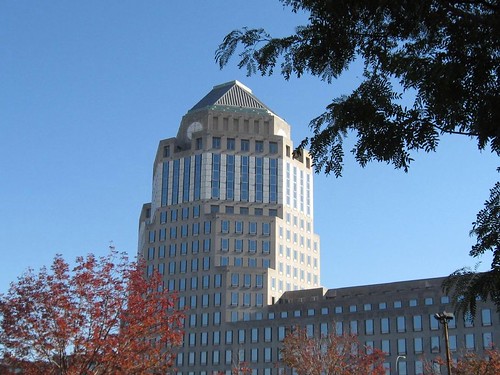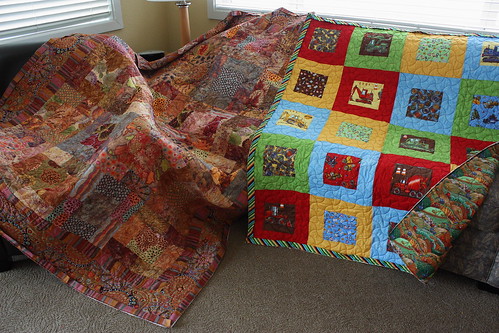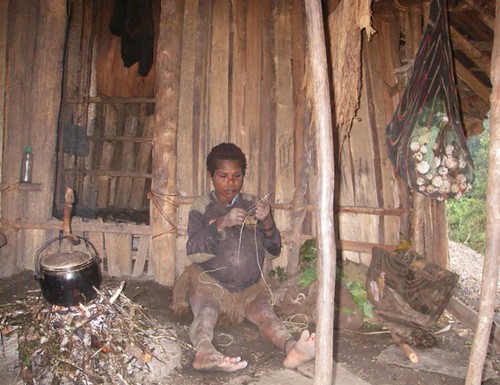Soap Opera Palace: Procter & Gamble Headquarters
Image by elycefeliz
Soap Opera : The Dark Side of Proctor and Gamble- www.textbooksrus.com/search/bookdetail/?isbn=978067189781...
Investigative reporter Alecia Swasy reveals the chilling truth about Procter & Gamble--the company that produces Tide, Crest, Pringles, Pampers, and a host of other popular products. From offices run with obsessive control to tales of extraordinary marketing arrogance, Swasy paints the picture of a cutthroat company. "Explosive".-- Fortune.
books.google.com/books?id=3ns8mFjEpXcC&dq="Soap+...
www.pandgkills.com/main.html
Each year, thousands of animals die in Procter & Gamble laboratories -- the victims of painful, archaic and entirely unnecessary product tests. Caustic chemicals are forced into the eyes of rabbits and applied to animals' shaved and raw skin. Laboratory workers place the animals in restraining devices so they cannot struggle while the workers apply the chemicals, which burn into the animals' eyes and skin. P&G "scientists" do not sedate the animals or give them pain killers. Animals sometimes break their necks or backs attempting to escape the pain. Those that survive are used in yet additional painful tests ... until they are finally killed. The victims include rabbits, guinea pigs, hamsters, ferrets and other animals.
P&G refuses to stop testing its products on animals, despite the fact that these tests are not required by any law, and despite the fact that more reliable and humane alternatives do exist.
www.uncaged.co.uk/pg.htm
www.poynter.org/content/content_view.asp?
id=24392
en.wikipedia.org/wiki/Procter_and_Gamble
Procter & Gamble Co. (P&G, NYSE: PG) is a Fortune 500, American global corporation based in Cincinnati, Ohio, that manufactures a wide range of consumer goods: especially SOAP!
P&G is the biggest marketer in the U.S., outspending all other firms on advertising. And its products are found in 98 percent of all households.
Products: www.pg.com/en_US/products/all_products/index.shtml
As of 2008, P&G is the 23rd largest US company by revenue and 14th largest by profit.
It is 10th in Fortune's Most Admired Companies list (as of 2007).[2][3]
P&G is credited with many business innovations including brand management, the soap opera, and "Connect & Develop" innovation.
According to the Nielsen Company, in 2007 P&G spent more on U.S. advertising than any other company; the .62 billion it spent is almost twice as much as General Motors, the next company on the Nielsen list.
History
William Procter, a candlemaker, and James Gamble, a soapmaker, formed distinct companies. The two men, immigrants from England and Ireland respectively who had settled earlier in Cincinnati, might never have met, had they not married sisters, Olivia and Elizabeth Norris.
Since both their industries used similar resources, the Panic of 1837 caused intense competition between the two and as a result it led to discord with the family. Alexander Norris, their father-in law decided to call a meeting where he convinced his new sons-in-law to become business partners. On October 31, 1837, as a result of the suggestion, a new enterprise was born: Procter & Gamble.
The company prospered during the nineteenth century. In 1859, sales reached one million dollars. By this point, approximately eighty employees worked for Procter & Gamble. During the American Civil War, the company won contracts to supply the Union Army with soap and candles. In addition to the increased profits experienced during the war, the military contracts introduced soldiers from all over the country to Procter & Gamble's products. Once the war was over and the men returned home, they continued to purchase the company's products.
In the 1880s, Procter & Gamble began to market a new product, an inexpensive soap that floats in water. The company called the soap Ivory. In the decades that followed, Procter & Gamble continued to grow and change. The company became known for its progressive work environment in the late nineteenth century. William Arnett Procter, William Procter's grandson, established a profit-sharing program for the company's workforce in 1887. He hoped that by giving the workers a stake in the company, they would be less inclined to go on strike.
Over time, the company began to focus most of its attention on soap, producing more than thirty different types by the 1890s. . . . In the early twentieth century, Procter & Gamble continued to grow. The company began to build factories in other locations in the United States, because the demand for products had outgrown the capacity of the Cincinnati facilities.
The company's leaders began to diversify its products as well and, in 1911, began producing Crisco, a shortening made of vegetable oils rather than animal fats. In the early 1900s, Procter & Gamble also became known for its research laboratories, where scientists worked to create new products. Company leadership also pioneered in the area of market research, investigating consumer needs and product appeal. As radio became more popular in the 1920s and 1930s, the company sponsored a number of radio programs. As a result, these shows often became commonly known as "soap operas".
Throughout the twentieth century, Procter & Gamble continued to prosper. The company moved into other countries, both in terms of manufacturing and product sales, becoming an international corporation with its 1930 acquisition of the Newcastle upon Tyne-based Thomas Hedley Co. Procter & Gamble maintained a strong link to the North East of England after this acquisition. In addition, numerous new products and brand names were introduced over time, and Procter & Gamble began branching out into new areas. The company introduced "Tide" laundry detergent in 1946 and "Prell" shampoo in 1950. In 1955, Procter & Gamble began selling the first toothpaste to contain fluoride, known as "Crest". Branching out once again in 1957, the company purchased Charmin Paper Mills and began manufacturing toilet paper and other paper products. Once again focusing on laundry, Procter & Gamble began making "Downy" fabric softener in 1960 and "Bounce" fabric softener sheets in 1972. One of the most revolutionary products to come out on the market was the company's "Pampers", first test-marketed in 1961. Prior to this point disposable diapers were not popular, although Johnson & Johnson had developed a product called "Chux". Babies always wore cloth diapers, which were leaky and labor intensive to wash. Pampers simplified the diapering process.
Over the second half of the twentieth century, Procter & Gamble acquired a number of other companies that diversified its product line and increased profits significantly. These acquisitions included Folgers Coffee, Norwich Eaton Pharmaceuticals, Richardson-Vicks, Noxell, Shulton's Old Spice, Max Factor, and the Iams Company, among others. In 1994, the company made headlines for big losses resulting from leveraged positions in interest rate derivatives, and subsequently sued Bankers Trust for fraud; this placed their management in the unusual position of testifying in court that they had entered into transactions they were not capable of understanding. In 1996, Procter & Gamble again made headlines when the Food and Drug Administration approved a new product developed by the company, Olestra. Also known by its brand name Olean, Olestra is a substitute for fat in cooking potato chips and other snacks that during its development stages is known to have caused anal leakage and gastro-intestinal difficulties in humans.
Procter & Gamble has expanded dramatically throughout its history, but its headquarters still remains in Cincinnati.
www.pg.com/en_US/index.shtml
Dryer Repair
Image by christophercraig
Yeah, you're following my Flickr site hoping to see new pictures of the baby and here's a picture of a dryer. I don't have (and probably won't ever get) a blog. Amanda says I should so that I can stop bugging her about politics, but I don't think blogging about it would change anything, and I'm not likely to blog about it anyway. There are lots of sites out there for getting your fill on politics, and I don't really like pontificating on it except to whine occasionally about how my money is being wasted.
So on to why I have a picture of a dryer. About two days before Peter was born, our dryer died. Things have been busy so we've just been sending laundry out with relatives until I got a chance to take it apart. After about an hour's work I got it far enough apart to be able to tell that the drive belt and the idler were both shot and I could in fact replace them. I found that www3.sears.com has nice diagrams of their appliances with part numbers, and I could get the two parts I needed for with shipping. Not great but cheaper than a dryer.
Then I went and searched on Google and found someplace that would get it to me for . Good, but maybe I could do better. I found the two parts on eBay for total from a single seller when I noticed there was a kit that had my two parts plus the rollers the drum sits on. I searched again for that and found another seller that would give it to me for total, including shipping.
Hopefully I'll have my parts by the end of the week (which I'll note is faster than Sears would get them here unless I paid extra).
Cannon Beach Trip
Image by Quiltsalad
Pictures from Sewing at the Beach June 2012. A couple of times a year my best friend and I go to the beach and make quilts. These two just got binding put on them this trip as they just came back from my quilter at Sister's Fabrics in Chehalis. Another great fun job of quilting. The baby quilt is for my husband's cousins new grandson (to be born tomorrow) so I need to hurry up on that binding.
Moge, part 6
Image by Derek & Sarah Grant
Just another final picture of Moipi in front of her house making a new Moge before her baby is born. Looks like her little one is
going to arrive soon!
Tidak ada komentar:
Posting Komentar